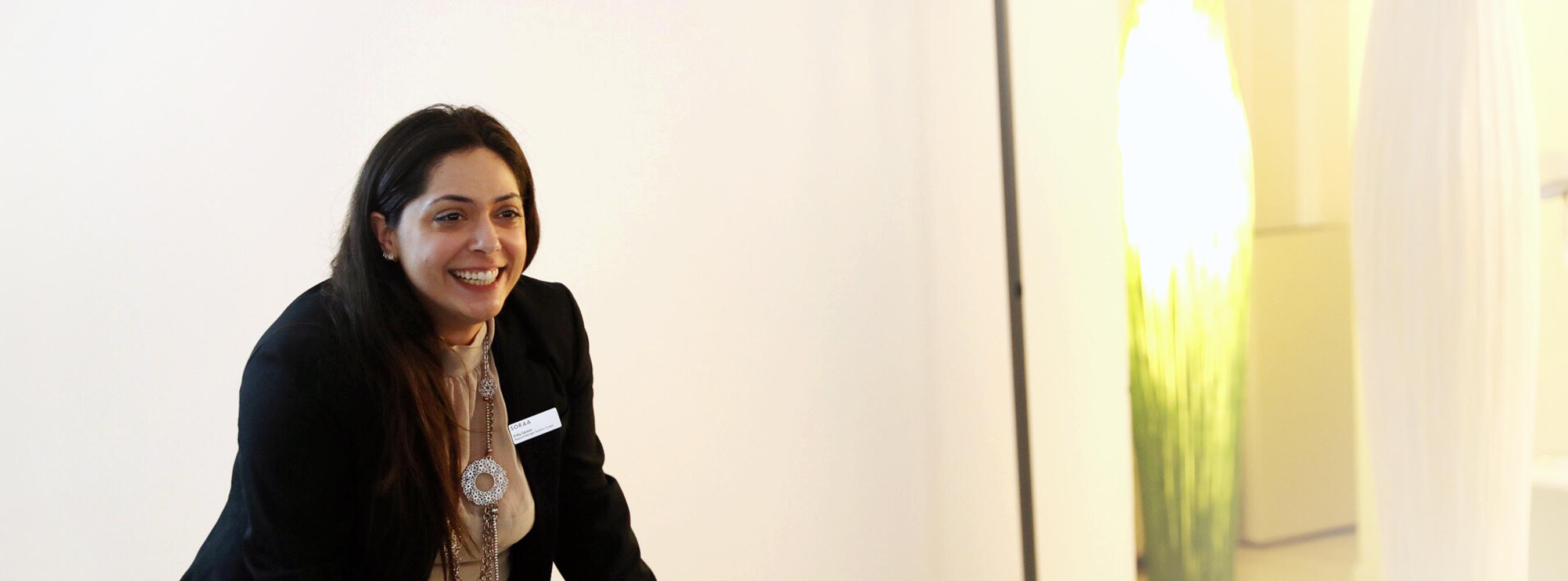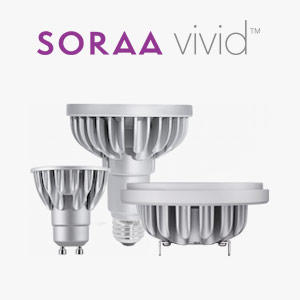I like this
Spend a moment with Erika Sanson, and you’ll immediately understand why she serves as SORAA’s regional manager and lighting designer of Southern Europe. The talented Italian draws upon her technical mastery of light when collaborating with clients on high-end projects, but she also listens to her creative intuitions to craft one-of-a-kind masterpieces.
Since graduating from the Polytechnic University of Milan, Erika has introduced the art of lighting design to a range of spaces across Southern Europe―from luxury yachts to historic churches.
We sat with Erika to learn more about her career and outlook on the lighting industry. Read on to discover how this “poet of light’s” passion for light surfaces in every project she touches.
Have you always worked in the lighting industry?
Yes. I started 10 years ago in one of the most important lighting design centers in Italy. After that, I worked in the yachting industry for several years developing special products and designing lighting plans.
What drew you to work at SORAA?
I was fascinated by the flexibility SORAA is able to give to a simple light source.
What separates SORAA from other lighting companies?
The flexibility of our products. Why? Because we live in dynamic space, and the new generation of architects works with this new mindset. Having one product with several possibilities is simply fantastic.
What do people appreciate most about your approach to lighting?
Considering my experience in the yachting industry, I am a “tailor” of sorts when it comes to lighting. I have always worked with high-end customers and designers, and my first aim is satisfying them. I want to bring their vision to life with light.
Which project from your career are you most proud of? Why?
My first challenging lighting project was for an important shipyard in Italy, where I worked on a custom 40-meter yacht. On that occasion, I really learned what it means to pay attention to every little detail.
But the project I am most proud of is the realization of an entire series of lighting fixtures for a fleet of mega yachts. It began as a custom spot project, but the team of architects loved it so much that they turned the lighting fixtures into standard equipment.
Talk to us about your favorite SORAA project.
My favorite SORAA project is the Spice Room restaurant in Sydney’s Circular Quay area. I love it because the lighting design evokes feelings similar to those of a Caravaggio painting, which reminds me of my own culture.
It is totally clear that light was handled by someone who understood the essence of the place. Light is not everywhere. Rather, light was placed just where it was needed.
With SORAA LED lamps, colors are reminiscent of a painting and everything seems smooth and embracing. Technically speaking, SORAA has the smallest beam in the market, which makes it perfect to spot anything.
Many times, people have lots of ideas and requests but no idea how to realize them. The most difficult part is explaining that you do not have to illuminate everything. Our goal is to help clients understand the key points to creating a memorable story with light.
What has been the most difficult skill or approach you have had to learn in your role at SORAA? When did you finally master it, and how?
A difficult aspect of any job is communicating and explaining what you already know in simple terms, whether it be technical details, formulas or calculations.
SORAA provides an amazing product that goes beyond just light, so I have to convey how SORAA provides healthy light, rendering brilliant colors with industry-leading technology.
I think I immediately mastered the art of communicating SORAA’s technology to clients. Sometimes words are not enough, so I also show what our amazing light can do.
If you could give one piece of advice to a young person in your field, what would you say?
We live in light―it is in our environment and touches our skin. Light is a visual experience, and eyes never lie.
Whoever approaches this field should never forget this. Additionally, they should never underestimate that light is a scientific matter. We always have to find the balance between technical aspects and emotional ones if we want to create cozy and comfortable spaces that work.
When and how did you discover your passion for light?
When I studied at the Polytechnic University of Milan, I just saw the boring aspects of light. No one needs to know all the types of lamp holders by heart, for example, though you certainly need to possess strong technical knowledge. I fell in love with light when I understood that my artistic side could meet my technical side in this discipline.
If you could write your philosophy about lighting in one sentence, how would you articulate it?
We make the invisible, visible.
What is one thing everyone should know about light?
The quality of light determines the quality of life.
How do you think the lighting industry will change in the future?
We are experiencing a transition from simple light to the concept of dynamic light. Just look at all the lighting control systems available to create different lighting schemes depending on the activity you would like to do in a specific environment. People are beginning to understand that light as we’ve known it for centuries cannot give us the right “atmosphere.” Light must be dynamic to deliver extraordinary experiences.







